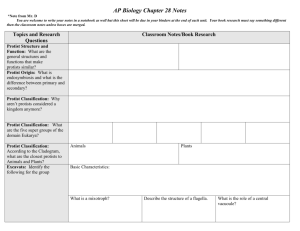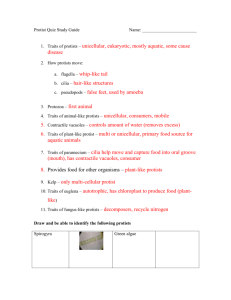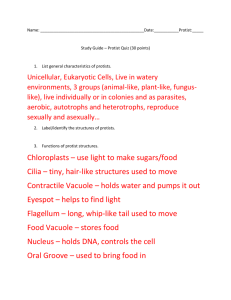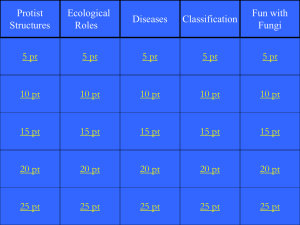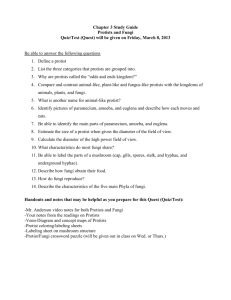Activity: Discovering Protists
advertisement
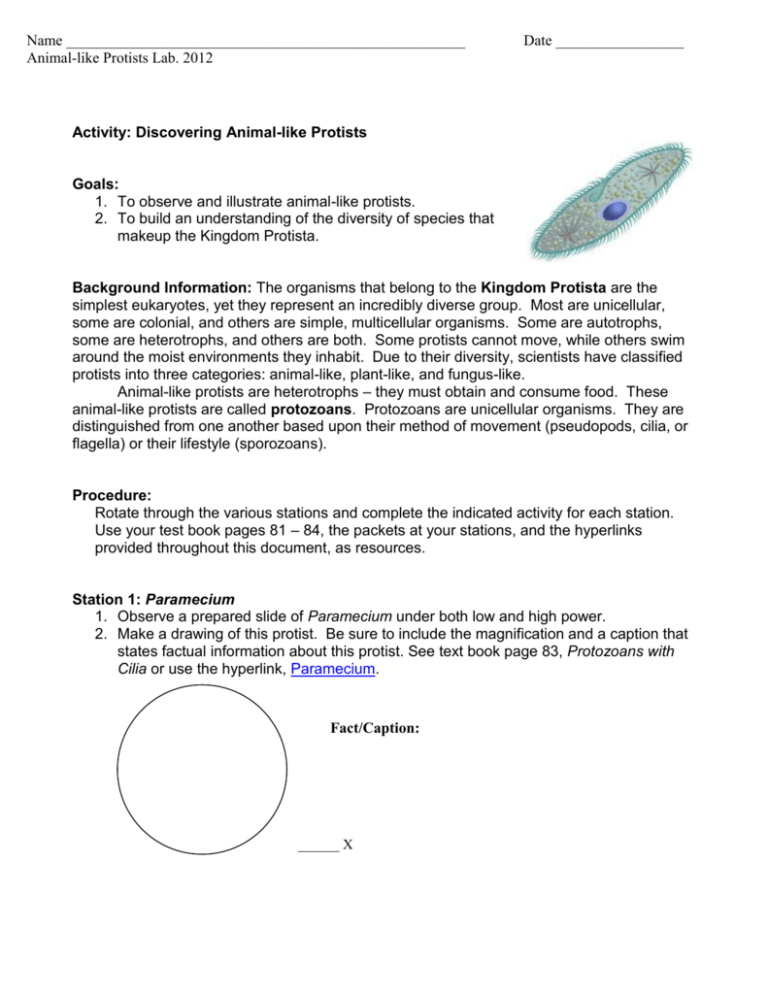
Name _____________________________________________________ Animal-like Protists Lab. 2012 Date _________________ Activity: Discovering Animal-like Protists Goals: 1. To observe and illustrate animal-like protists. 2. To build an understanding of the diversity of species that makeup the Kingdom Protista. Background Information: The organisms that belong to the Kingdom Protista are the simplest eukaryotes, yet they represent an incredibly diverse group. Most are unicellular, some are colonial, and others are simple, multicellular organisms. Some are autotrophs, some are heterotrophs, and others are both. Some protists cannot move, while others swim around the moist environments they inhabit. Due to their diversity, scientists have classified protists into three categories: animal-like, plant-like, and fungus-like. Animal-like protists are heterotrophs – they must obtain and consume food. These animal-like protists are called protozoans. Protozoans are unicellular organisms. They are distinguished from one another based upon their method of movement (pseudopods, cilia, or flagella) or their lifestyle (sporozoans). Procedure: Rotate through the various stations and complete the indicated activity for each station. Use your test book pages 81 – 84, the packets at your stations, and the hyperlinks provided throughout this document, as resources. Station 1: Paramecium 1. Observe a prepared slide of Paramecium under both low and high power. 2. Make a drawing of this protist. Be sure to include the magnification and a caption that states factual information about this protist. See text book page 83, Protozoans with Cilia or use the hyperlink, Paramecium. Fact/Caption: ______ X Station 2: Radiolarians 1. Observe a prepared slide of a radiolarian under both low and high power. 2. Make a drawing of this protist. Be sure to include the magnification and a caption that states some factual information about this protest. Use the information at your station or the hyperlink, Radiolarians. Fact/Caption: ______ X Station 3: Amoeba 1. Observe a prepared slide of Amoeba under both low and high power. 2. Make a drawing of this protist. Be sure to include the magnification and a caption that states some factual information about this protist. Use text book pages 81-82, Protozoans with Psuedopods, the handout at your station or the hyperlink, Amoeba. Fact/Caption: ______ X Station 4: Video Segment: Malaria Watch the video segment about malaria and answer the following questions. a. What animal-like protist causes malaria? b. Which insect spreads the protist from one human to another? c. Which organ of the human body does malaria affect? d. How many people worldwide die from malaria each year? Station 5: African Sleeping Disease To complete the following table go to: http://www.cdc.gov/parasites/sleepingsickness/gen_info/faqs-east.html African Sleeping Sickness What parasite causes this disease? Name the insect that spreads this animal-like protist among humans. Symptoms of the disease Prevention of the disease Station 6: Protist Poetry Corner 1. Choose any animal-like protist and create a poem about your protist. Examples of different types of poems are available at your lab station. 2. Create a drawing or cartoon to accompany your poem. Station 7: Article on Giardiasis To answer the following questions go to: http://www.cdc.gov/ncidod/dpd/parasites/giardiasis/factsht_giardia.pdf a. What animal-like protist causes giardiasis? b. How is the parasite spread from one human to another? c. What are the symptoms of giardiasis? d. How can giardiasis be treated?

